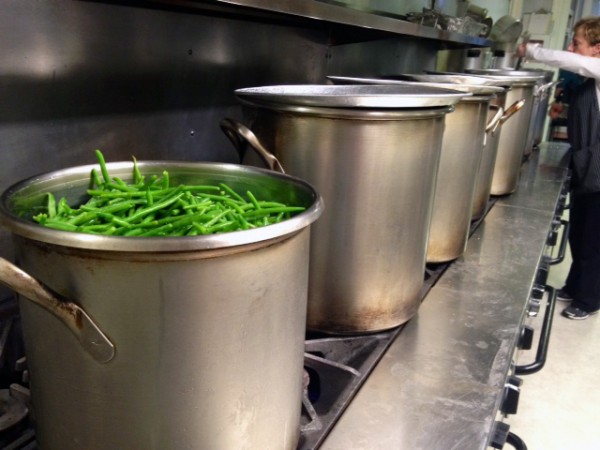
By James A. Vezos
It was a chilly Tuesday morning in late February when I first volunteered at St. John’s church. I was dropped off in the neighboring town of Harrison at a Hess Station. I made my way over Bridge Street Bridge into Newark where I continued walking alongside the Passaic River, passing the NJ PAC, before the English Norman style church was in sight.
A black steel fence borders St. John’s perimeter, and an opening allows for passage up its driveway. Two rows of high standing tables are placed under a makeshift canopy on the right hand side, providing cover from the sun and rain.
I continued walking up the driveway until I saw a sign that read, “Soup Kitchen Entrance”. I swung open a heavy steel gate and my made my way down a few steps where I was to meet a remarkable group of steadfast men hard at work.
Sooner than I was able to hang up my pea coat and situate my self with this unfamiliar kitchen, a man asked me if I have ever chopped onions before. After answering his question, a large knife was placed in my hand. It was then that I was formerly introduced to the “Tuesday Crew” – crying over inadequately diced onions at seven thirty in the morning.
I soon realized that this was not a cruel joke. The onions and a variety of different vegetables were also being chopped for a soup that’s made for lunch. Much of lunch is prepared even before breakfast is served at eight thirty.
All of the foods served through St. John’s are strictly donations from the people that wish to make them. In fact, it takes upwards of $750,000 a year to keep St. John’s running. The government funds none of this money. Majority of the funds comes from individual donors and corporations such as Prudential and Investor Savings.
During the 1970’s, St. John’s started serving sandwiches to people they found seeking comfort outside their doors. Their operation now includes serving 500-700 hot meals daily five days out of the week.
St. John’s is open Tuesday through Saturday, and each day is comprised of a different group of volunteers that cook and package the meals. The entire operation begins at seven in the morning. During this time coffee is brewed in three huge thermoses, and small plastic bags are filled with different varieties of pastries.
While all this is taking place, a few volunteers are working on lunch – the largest meal that they serve during the day. All the varying jobs are divvied up so that the food is prepared on time. Some people work the stove; others chop vegetables and slice meat.
When you are there to witness the contents of a gigantic storage room be transformed into a meal that serves a line of people that flows along the side of the McCarter Highway, you feel glad to be part of a process that only a handful take part in.




